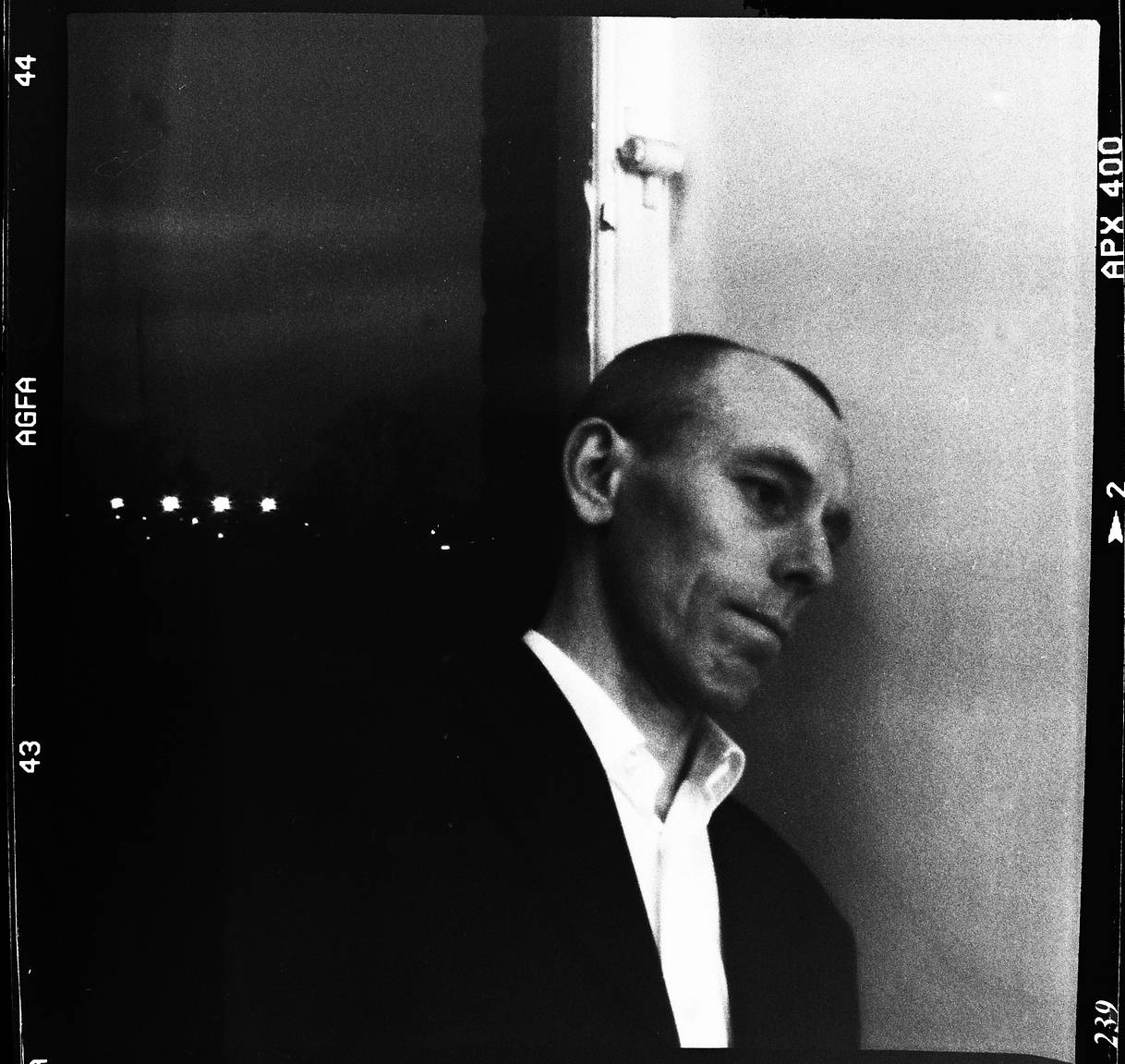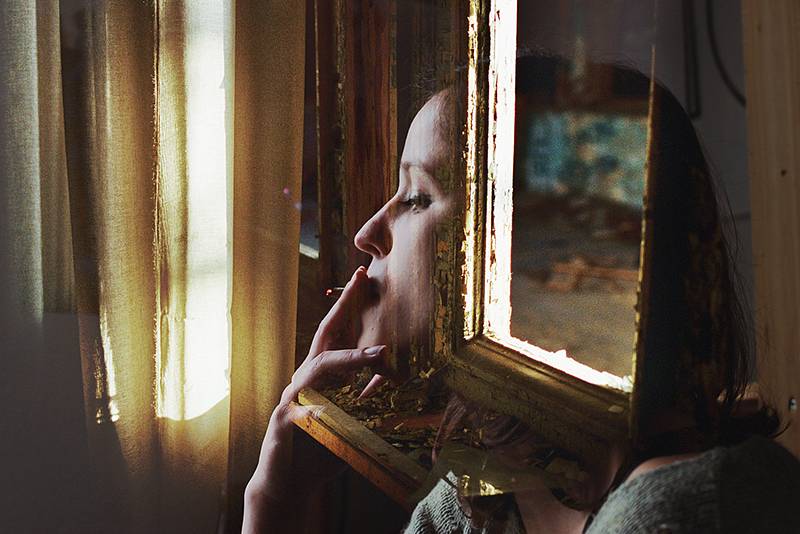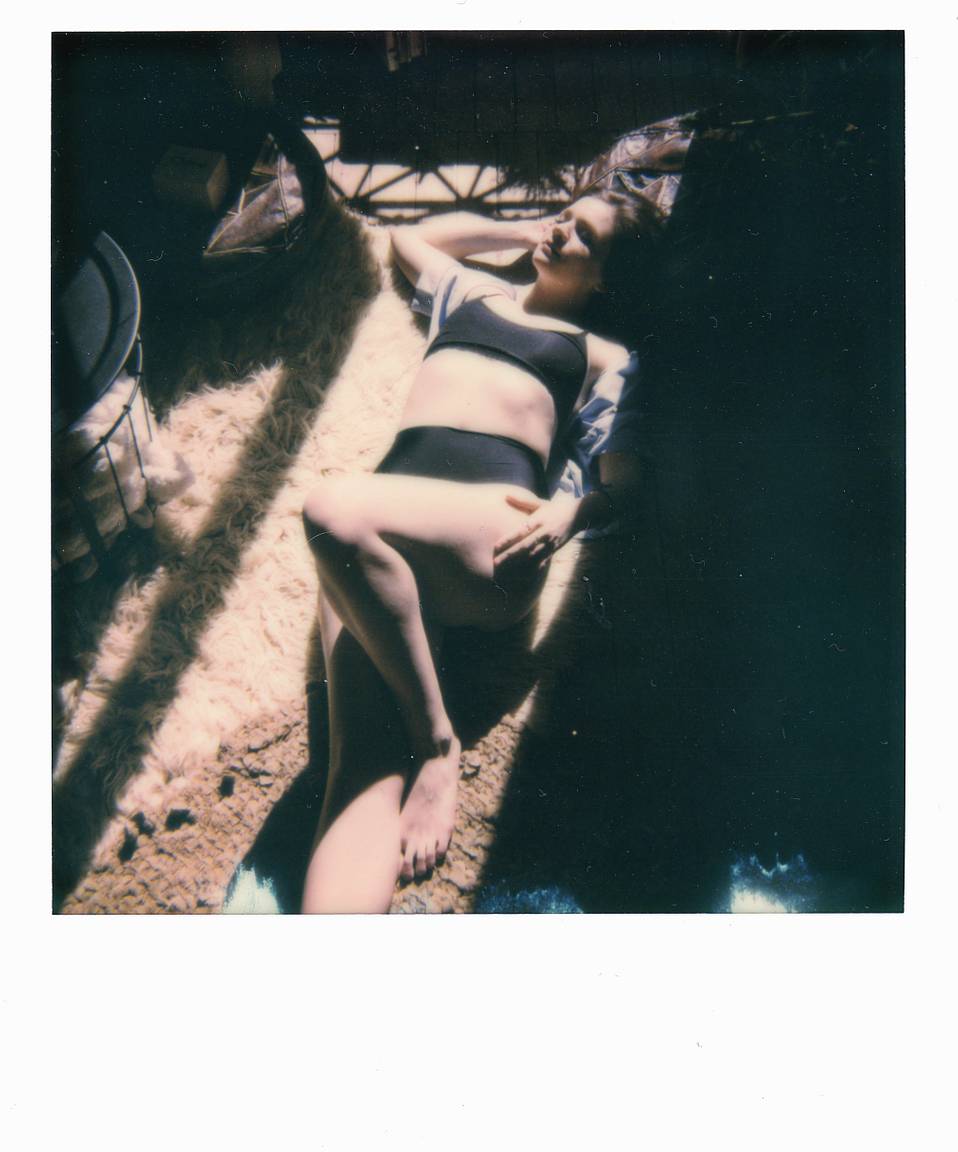Community Spotlight: @coffeeshooter and @corentinschieb
1 15 Share TweetBeing one of the largest analogue photography communities on the web, we are proud of the creativity and diversity of our members. For this month's Community Spotlight, we are pleased to introduce to you Lomographers @coffeeshooter and @corentinschieb and their unique way of seeing the world.
Name: Tony Shelley
Location: Leicester, UK
LomoHome: @coffeeshooter
Hi Tony! I would like to get to know what you do and what got you started with photography?
I made my first real images in 1981, with an old Kodak 35 mm camera and a roll of Tri-X film. I had no darkroom in those days, so I sent the film away to be developed. It was the first time I’d ever seen a ‘contact sheet’, and that was the spark that lit a fuse that’s still burning today. From there I purchased my first SLR, an old Canon model with a couple of lenses. Eventually, I set up a darkroom at my parents' house where I was living and made images of anything and everything.
Bands, concerts, political demonstrations, still life, etc. As the 1980s progressed, I purchased better equipment, and every spare moment from my day job was taken up with photography.
How did you discover Lomography and what made you join our analogue community? Who are your favorite photographers here?
Eight years ago, after I retired from my job as a product photographer in the local government, I was looking for new ways to make images. I had been using a digital camera for my professional work and was tired of it all, I wanted to get back to film photography. I literally ‘stumbled’ across Lomography on the internet, and I was immediately hooked, both to the idea and the product.
So, with the money I’d just received from a pension plan, I purchased three Neptune Art Lenses, a La Sardina, a Belair medium format camera, and a Lomo'Instant Square. At this stage of my life, I became very interested in ‘coffee culture’, both writing and making images of everything that genre endured. I began experimenting with film, and found that Ilford XP2 and Lomography 800 Color Negative film were ideal. Much later, I purchased two Lumix four-thirds digital cameras and promptly purchased a set of Lomography Experimental Lenses for them. They are fantastic.
What is your relationship with your subject? How do you approach portraiture?
As well as photographing coffee culture, I engage in a lot of ‘street’ or ‘urban’ photography, and I have a very casual approach to this when people are involved. By that I mean I never ‘set things up’, I just shoot what is there. I spent 18 years in a studio, setting things up and everything had to be so precise. After I retired I mentally dumped all that way of making an image, it was strangling my creativity.
What does film represent to you?
Film is central to everything I do now, although I still make digital shots with the Lumix. I now have a custom-made darkroom in our garden shed, I build my own large format pinhole cameras, either for photographic paper or film, and I love to experiment. I spent a couple of years using Fomapan 100 and developing the film in Cafenol, which just blew my mind. Sometime later I began to develop color film in cafenol, and the results were wild. In short, I think of myself as something of a photographic alchemist, always experimenting, always on the prowl for something new.
Where do you draw inspiration from?
Inspiration, that’s an interesting question. Back in the late 1990s, I met and got to know two brilliant photographers, Steve Pyke and David Gepp. Steve’s portraits are legendary, like me he’s from Leicester, UK but he now resides in New Orleans. David, actually changed my photography forever, with his color‘ pinhole’ work in Venice, which became the subject of a BBC documentary in the latest 1990s. Since that time, pinhole photography has been a passion, and I recently had an exhibition of pinhole images (along with color snapshots), here at the Chapel Gallery, Leicester, which was called ‘A Society Corralled’. Images of Lockdown. Another huge influence is without a doubt, the American photographer, William Christenberry, who sadly died several years ago.
What's coming up for you in your next photo project?
Over the next six months, I will be photographing our back garden, with four large format pinhole cameras, and some digital pinhole, showing the death and rebirth of an urban garden space. Another interesting project was suggested by my wife of 16 years, Cathy. The project will be called ‘Skin’ and will involve making images of her using mostly film, showing the changes in skin (blemishes, elasticity, wrinkles etc), and maybe another person too. Cathy was a nurse for over 45 years, and her last working days in a dermatology department, in a local hospital. With her knowledge and my skills, it should make for an interesting ‘body’ of work, excuse the pun.
Name: Corentin Schieb
Location: Nantes, France.
LomoHome: @corentinschieb
Hi Corentin! I would like to get to know what you do, and what got you started with photography?
Hi! My name is Corentin Schieb and I’m a French photographer and filmmaker based in Nantes.
I started photography about nine years ago, as a way to keep memories. As a child, I used many disposable cameras, and for as long I can remember, I’ve always loved to take pictures. But I really discovered film photography in 2014 when my dad gave me his camera, a Canon EOS 650. At that time, I moved to Berlin, which was a whole new place to discover with a lot of new encounters, and I wanted to capture all of it through the lens. I never stopped shooting film since then. Even though I still continue to use digital cameras for filmmaking, I’m mainly focusing on film photography since a couple of years.
How did you discover Lomography and what made you join our analogue community? Who are your favorite photographers here?
I discovered Lomography a few years ago when I was looking for advice about using a Lomo LC-A camera that my family gave me. I was introduced then to the website, and I immediately started to spend a lot of time there, documenting myself about camera techniques, different types of film roll, analog experiments… I joined the analogue community right after developing my first photos and started to share them. I’ve discovered many inspiring photographers here. Some of my favorites are @hodachrome @lefilledeer @popoti @louisdazy @annefleursire @elisabethdare @chloemaly @fredbeveziers.
I discover every day talented people within this Community and it’s so positive to see how everyone is welcoming and kind to each other!
What is your relationship with your subject? How do you approach portraiture?
The subjects in my images are friends rather than models, and I always try to capture scenes of life and portraits without much staging. Whether it’s chilling with friends on a Sunday morning or wandering around the city late in the night, I always act like it’s not a photoshoot and I’m taking the time to witness these moments with my own vision and feelings, between melancholy, nostalgia and onirism. For portraiture, it’s all about the atmosphere and the connection you can have with your subject. If I happen to take pictures with a new person, I always try to meet her first and talk with her, in order to understand who she is and to create a relationship of trust.
What does film represent to you?
To me, film represents authenticity: from the shooting to the final development of a roll, I think it is a sincere creative process, where technique and photographic laws are no longer constraints but an invitation to experiment and create images, with sometimes surprising results. Film photography gets me also on adventures, it makes me meet new people, capture memories and ephemeral moments through my lens… It represents some kind of personal freedom.
Where do you draw inspiration from?
Mainly from cinema and music. I always try to put something a little bit musical or a melody into each of my photographs, to feel this emotional connection I need to shoot.
Can you give me five titles of your favorite film? How about your top five musicians?
That's a tough question! I love a lot of films of different kinds. But I would include in my top five:
- Kids by Larry Clarke
- Mulholland Drive by David Lynch
- Electrick Children by Rebecca Thomas
- Children of Men by Alfonso Cuarón
- Incendies by Denis Villeneuve
For my favorite kind of music: it depends a lot on the mood but I love anything related to rock, whether it's folk, punk, blues... Lately, I've been listening to a lot of hardcore and post-rock. Currently, I would say Pink Floyd, Nine Inch Nails, Mogwai, Converge, Birds in Row... there's a lot!
How do you put music in your picture? Do you think or imagine of it? Do you move while taking pictures?
I almost always listen to music while I'm taking pictures, whether it is in the background or on my headphones: it's a bit hard to explain but it helps me a lot to find the right feels and mood, especially if I'm shooting with some other people with whom I want to share the same vibe. And If I feel an emotional connection from the words or a melody, I sometimes also name some of my pictures with inspiration from lyrics I listen to.
What's coming up for you in your next photo project?
It has been pretty difficult for a year and a half to travel abroad with the pandemic, so I have a few plans to get on adventures again and shoot my travels for the year to come.
Also, I’m planning to work in 2022 on my first photography book, which is the project I’m the most excited about!
Stay tuned for our monthly Community Spotlight to discover the work of some of the most talented Lomographers!





















































一個留言